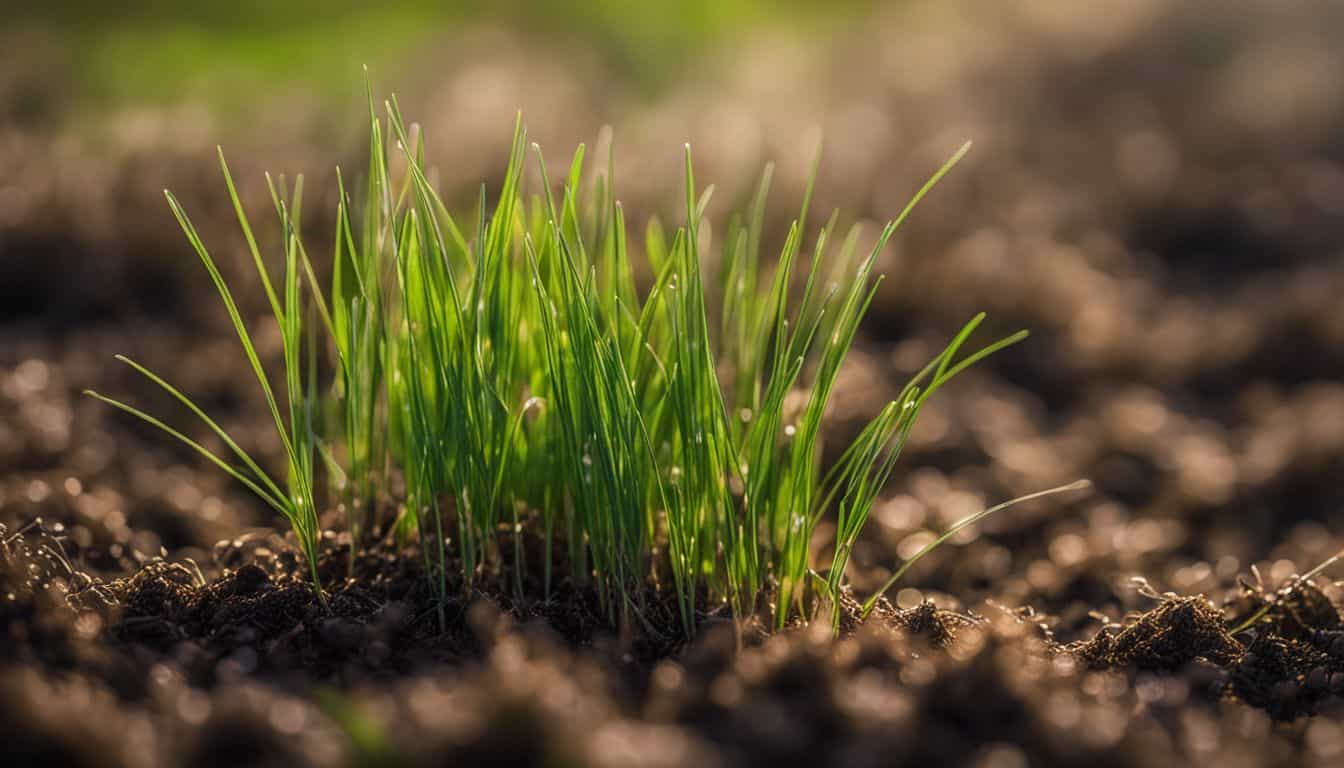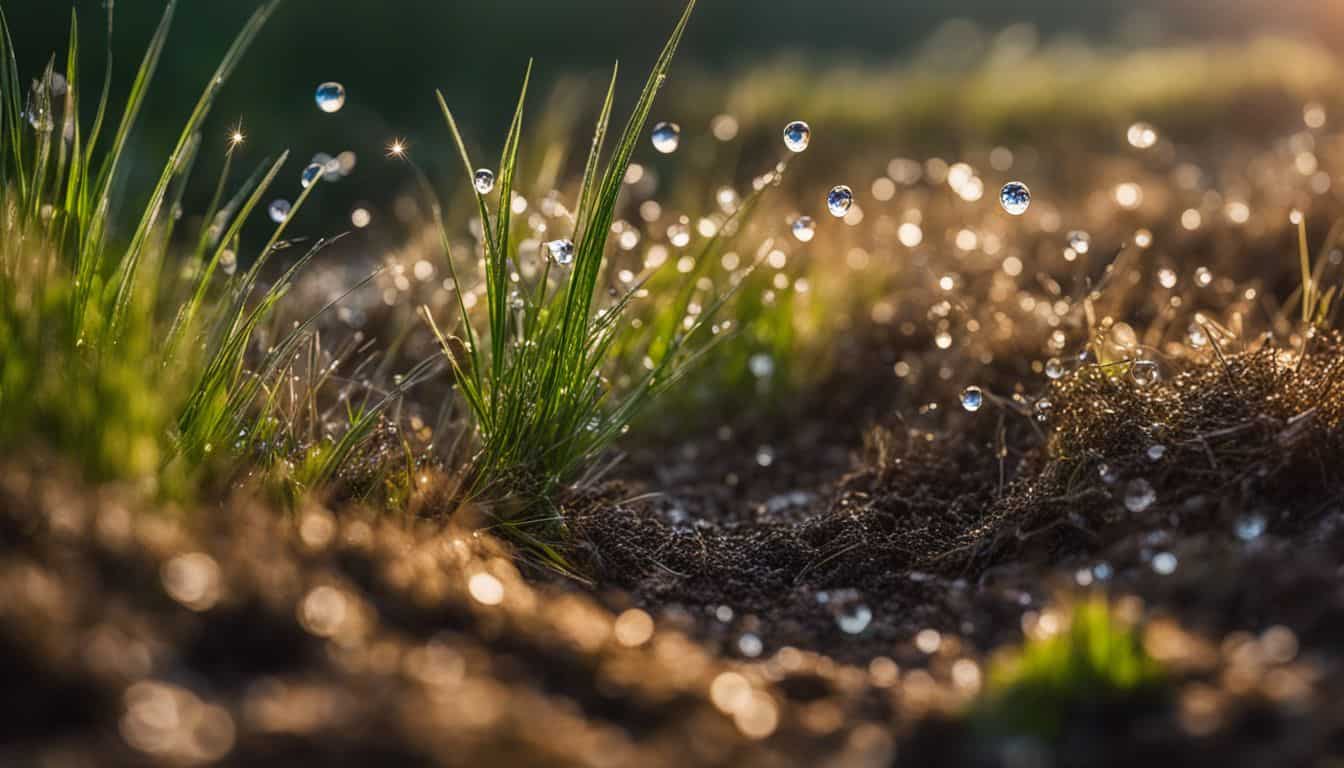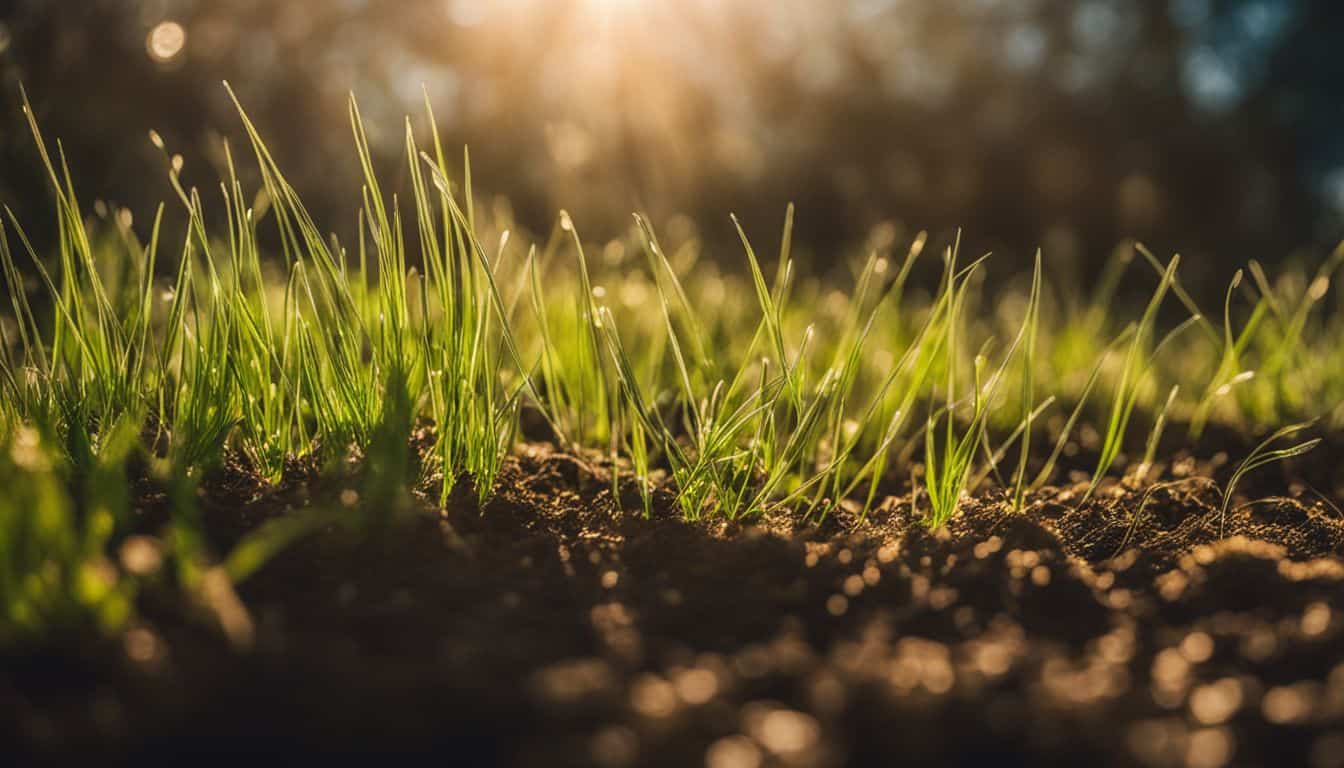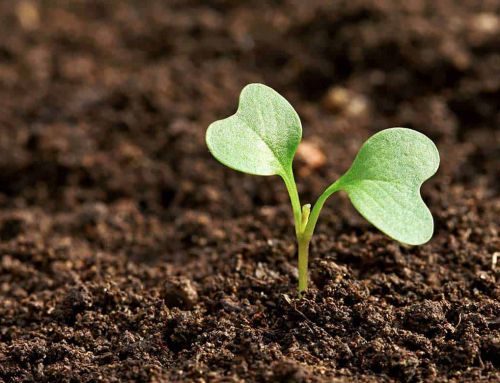Embarking on the journey of planting grass seed might initially seem like a straightforward task, yet deciphering the timeline for its growth can turn out to be quite perplexing. A pivotal piece of information to hold onto is that grass seed typically begins to sprout between 5 and 10 days following its sowing.
This initial phase is fundamental in cultivating a verdant lawn. The transition from seeding to full maturity encompasses various stages and necessitates precise conditions.
Allow me to introduce myself – I’m Billy Nimmo, the mind behind Idealseed, where three decades have been devoted to enhancing landscapes with superior quality seeds across the UK.
My journey has furnished me with invaluable insights and a deep-seated understanding of what truly facilitates optimal growth. As we progress, I’ll share some pearls of wisdom on how you can nurture your lawn into flourishing without any unnecessary complications.
Through this narrative, my aim is not only to impart practical advice but also to weave in my personal connection and commitment towards creating beautiful green spaces that stand the test of time.
Let’s embark on this green-fingered adventure together, shall we?
Key Takeaways
- Grass seed starts to grow between 5 and 10 days after being planted.
- The best times to plant are in mid – late spring or early autumn for ideal weather conditions.
- Soil needs to stay moist but not too wet to help seeds sprout well.
- Different types of grass need different amounts of sunlight, water, and soil types.
- Simple steps like choosing the right time to plant, preparing the soil, and correct watering can make your lawn grow better.
Factors Influencing Grass Seed Growth
Different seeds and the weather play big roles in how grass grows. The kind of seed, soil wetness, and what time it is in the year all matter a lot.
Type of Grass Seed
In my years with Idealseed, I’ve learned a lot about the types of grass seed and how they grow. Seeds like perennial ryegrass and red fescue start to sprout as soon as four days after planting.
It’s pretty impressive. On the other hand, bentgrass and meadow kinds take longer, around two weeks before you see green shoots.
Quality in the seed mix is key for successful growth.
Choosing the right type matters for your lawn’s look and health. For example, warm-season grasses like bermudagrass thrive in hot weather while cool-season ones like Kentucky bluegrass prefer cooler temps.
Each variety has its own needs for water, sunlight, and soil type too. Over at Idealseed, we blend new tech with old methods to get you seeds that suit your land best – whether it leans more towards clay or sand.
Soil Moisture
Keeping soil moist is key for grass seeds to grow. If the ground is too dry or too wet, seeds won’t sprout well. You need to find a balance. I make sure the earth stays damp but not soaked through.
Think of it like a sponge that’s been wrung out – it should feel similar.
In my years at Idealseed, I’ve seen how important regular watering is, especially after sowing seed. A sprinkler can help a lot. It gives a gentle shower that doesn’t wash away seeds or create puddles.
Early mornings are best for watering because this lets soil absorb moisture before the sun gets too hot. Keeping an eye on rainfall helps too; if rain is due, you might not need to water as much.
Remember, good lawn care starts with understanding your garden’s needs – like how its thirst changes with weather conditions and seasons.
Time of Year
As we move from soil moisture to another key factor, timing plays a big role in grass seed growth. Mid-late spring and early autumn are the best times for planting. This is because cold air and ground chill can stop seeds from sprouting in winter, while summer heat can also slow them down.
In simple terms, aim for cooler periods but avoid the extreme cold and peak hot seasons.
The reason behind this timing is pretty straightforward. Seeds need mild conditions to wake up and start growing. Too much cold or heat doesn’t help at all. Think of it as picking the right moment when nature gives your seeds a thumbs up to go ahead and grow into a lush lawn or vibrant wildflower patch.
General Timeline for Grass Seed Germination
Understanding the general timeline for grass seed germination is crucial for anyone passionate about gardening or maintaining a beautiful lawn. From my extensive experience at Idealseed, where we blend traditional methods with modern science to produce quality grass and wildflower seeds, I’ve learned that patience and the right conditions are key to successful germination. Here’s a simple guide to help you know what to expect after planting your seeds.
| Day Range | Germination Stage | Conditions Needed |
|---|---|---|
| 1-5 days | Initial absorption of water | Moist soil, not too wet or dry |
| 5-10 days | Visible sprouting | Soil temperature at least 8 degrees Celsius |
| 10-14 days | Further establishment | Consistent moisture, proper sunlight |
| 2-3 weeks | First mowing (if required) | Growth to about 7cm, ensuring plant strength |
| 4 weeks | Stronger root establishment | Regular care, avoid over-watering |
This table gives a general idea of the timeline for grass seed germination under optimal conditions. Remember, these times can vary based on the type of grass seed, soil moisture, and the time of year you plant. At Idealseed, we recommend planting in mid-late spring or early autumn to take advantage of the best soil temperatures and moisture levels for germination. Using a high-quality seed mix can also significantly impact the success rate, something we at Idealseed pride ourselves on providing. Keep these tips in mind, and you’ll be on your way to a lush, green lawn or garden.
Steps for Successful Grass Seed Growth
Knowing how long grass seeds take to grow helps you plan better. Now let’s talk about making sure your grass seeds flourish.
Choose the Right Time
Plant in mid-late spring or early autumn. This uses the perfect weather to help seeds start well. Cool-season grasses like tall fescue prefer this timing.
Prepare Your Soil
Test your soil first. It should have a pH near neutral and be rich in nutrients like phosphorus (P) and potassium (K). Use lime if the soil is too acidic. This ensures your seeds get a good home to grow in.
Pick the Best Seed Mix
Depending on your garden, choose the right mix. If you want a lawn that stands up to wear, look for tough types like tall fescue. For a fine-looking lawn, consider bent grass.
Sow Seeds Properly
Spread them evenly across your soil. You can use your hands for small areas or a spreader for larger spaces. Then, lightly cover them with soil but don’t bury them deep.
Keep the Soil Moist
After sowing, water gently so as not to wash away seeds. The goal is moist soil, not wet or flooded areas.
Use Fertilisers Wisely
Add a starter fertiliser rich in essential nutrients but go easy on it to avoid burning young roots.
Regular Mowing
When grass reaches mowing height, use a cylinder mower for fine lawns or a rotary mower for general ones. Mow regularly but never cut more than one-third of the height at once to avoid stress on the grass.
Weed Control and Maintenance
Keep an eye out for weeds and remove them without harming new shoots of grass.
From my experience running Idealseed, patience and attention during these steps make all the difference in achieving that lush green lawn we all love.
Conclusion
Grass seed growth time can vary. It usually sprouts between 5 and 10 days. After that, it grows roughly 2/3cm weekly. Key factors include the season and soil warmth. Planting in mid-late spring or early autumn with the soil at least 8 degrees Celsius works best.
Keep soil moist for good results. Using a top-notch seed blend also helps seeds start well. Patience pays off as you watch your grass come to life, turning into a lush lawn over weeks.
FAQs
1. How long does it take for grass seed to grow?
Grass seeds usually start to grow within 7 to 21 days after being sown. The exact time can vary based on the type of grass, soil conditions, and weather.
2. Does planting time affect how quickly grass seeds germinate?
Yes, early spring or fall planting is ideal because the weather conditions help seeds germinate faster due to cooler temperatures and more rain.
3. Why is soil pH important for growing lawn grass?
Soil pH affects how well grass seeds grow. Neutral soils are best for most lawn grasses. A soil test can tell you if you need to adjust your soil’s pH with sulfur or other materials.
4. Can heavy rain impact grass seed growth?
Heavy rain can wash away seeds or compact the soil, making it harder for them to sprout properly. It’s best to plant when steady but not excessive rains are expected.
5. Should I add anything to my soil before planting grass seed?
Adding organic matter helps improve soil health and supports better germination rates of lawn seeds by improving drainage and nutrients available in the soil.
6. How do different climates affect when my lawn will come out of dormancy?
Climate greatly impacts when dormant turfgrass wakes up; warmer climates see earlier spring growth while colder regions may wait until late spring as snows melt and temperatures rise consistently.

I’m Billy Nimmo, founder of Idealseed. For over 30 years, I have worked in the grass and wildflower seed industry in the UK. My journey started with a vision to make Idealseed a leader in quality and innovation. We achieved this goal through hard work and embracing new technology.
Click here to preview your posts with PRO themes ››
My company is independent and licensed by the Scottish Government and The British Society of Plant Breeders. This shows our commitment to high standards and fair prices. We blend tradition with innovation to produce top-quality seeds. Our seeds thrive in tough environments, proving our success.
I lead a team at Idealseed that shares my passion for excellence. With their support, we have become known across Europe as a leading provider of grass and wildflower seeds. We focus on quality first and are always looking for ways to improve. Our approach combines traditional methods with modern science.
Over these years, I’ve guided Idealseed with clear values: quality, innovation, and sustainability. Our work helps lands flourish across the UK. With every seed mix we create, we aim for excellence. This dedication has shaped our company’s journey from an ambitious idea to a trusted industry leader.










